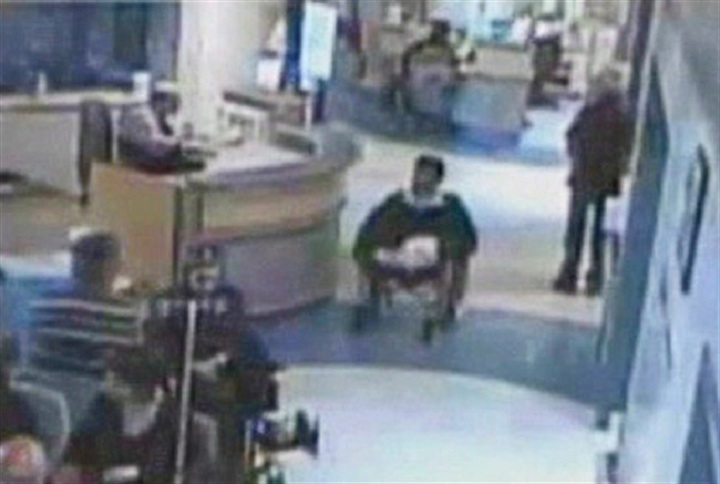WINNIPEG – One of the country’s leading emergency department experts says Canada’s hospital waiting rooms aren’t being clogged by people coming in with the flu, earaches and sprained ankles.

Grant Innes told an inquest into a man’s death during a 34-hour wait at a Winnipeg hospital that backlogs occur when admitted patients are stuck on stretchers because they can’t get a hospital bed or the specialist treatment they need.
Innes, head of emergency medicine at the University of Calgary, said emergency room overcrowding is a problem across Canada. But contrary to popular belief, studies show patients with minor complaints don’t take up a lot of hospital resources, he said.
Click here for full coverage of the Brian Sinclair inquest
Real problems occur when there are delays in discharging patients or because of poor planning by hospitals to deal with the busiest times, he said.
“If we don’t address that, the system will never get better,” Innes said Monday at the inquest into the death of Brian Sinclair – a double-amputee who died almost six years ago while waiting for care at Winnipeg’s Health Sciences Centre.
Someone walking into an emergency department at 3 p.m. on a weekday would be forgiven for thinking it was a “war zone,” Innes said. That same ER at 2 a.m. is quiet and virtually empty.
Hospitals often close beds in the summer or over Christmas because staff take time off, but that’s when demand is highest. Discharges plummet on weekends and are often delayed because patients can’t get a long-term care bed, he said.
It can take hours or days for some patients to be discharged because arrangements have to be made for home care, Innes said. In the meantime, patients are taking up beds while someone is suffering from a heart attack in the emergency waiting room.
Even scheduling some elective surgeries at off-peak times when most surgeons would rather not work would ease the pressure on emergency rooms, Innes suggested.
“Most people think this problem is so big, we cannot solve it. But small improvements when multiplied by large numbers of patients make a huge difference.”
Sinclair was referred to the hospital by a clinic physician because of a blocked catheter. The 45-year-old aboriginal man spoke to a triage aide before wheeling himself into the waiting room where he languished for hours. As his condition deteriorated, Sinclair vomited several times, but no one asked if he was OK or was waiting for medical care.
Sinclair had been dead for hours by the time he was discovered and rigor mortis had set in. He died of a treatable bladder infection.
Although many hospital staff testified they saw Sinclair, no one thought he was waiting for care. Some assumed he had been triaged already and was waiting for a bed. Others assumed he had been treated and discharged. Others thought he was drunk and was waiting for a ride or just needed a warm place to rest.
While many had hoped the inquest would delve into why such assumptions were made about Sinclair, Judge Tim Preston is focusing on how to unclog emergency waiting rooms.
Canada has a very low number of hospital beds, physicians and nurses per capita compared to the rest of the developed world, Innes testified. But adding beds wouldn’t necessarily solve the problem, he said.
“We probably do need new capacity in the system, probably most in long-term care. But if there are available beds, the physician may not be very aggressive about discharging patients.”
Many emergency departments choose to divert ambulances and “close the door” when a waiting room becomes too crowded rather than try to address the problem, Innes said.
“If you can solve the issue by closing the front door … those patients are out of sight, out of mind,” he said. “There is no need for them to find solutions. It sustains dysfunction.”
Sandi Mowat, head of the Manitoba Nurses Union, said Innes’s recommendations echo those of emergency room nurses. Those who work in emergency departments recognize the importance of planning better for peak periods and moving patients out of the waiting room quickly, she said.
“The emergency department seems to be the stop-gap for everyone and nobody takes accountability for those patients that are admitted that need to be moved elsewhere,” Mowat said.
Two more witnesses are scheduled to testify this week regarding emergency room overcrowding. The inquest is scheduled to wrap up Thursday after the Winnipeg Regional Health Authority, the nurses union and the Sinclair family have made their recommendations.


Comments